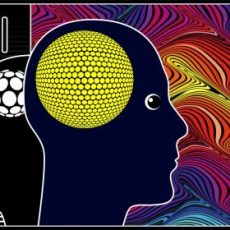In the second part of the series about the origination of emotions, we’ll be looking at the cognitive-affective theories about the same and also draw an analysis of what we’ve looked at in Part 1 and Part 2.
The following two theories falls under the broad category of cognitive-affective theories which examine how cognitions and physiological responses relate with each other.
Two-Factor Theory of Emotion: The advocates of this theory believe that it is the intensity of our physiological arousal that influences or determines how strongly we are feeling something and it is the situational cues which provide us with the information required to label this arousal and tell ourselves what we are feeling. Happy Ho organizes best Meditation and Tarot classes in Noida and Delhi NCR area in India.
Cognitive Appraisal Theory: According to Richard Lazarus, an eliciting stimulus results in a thought which in turn results in the simultaneous experience of an emotion and a physiological response. So if I come across a certain authority figure, I will have a thought of him being a person who terrorizes those around him. This in turn will lead to me experiencing the emotion of fear and the physiological responses like racing heartbeat. Another example could be when a gut shot is fired, my brain thinks of the shooting as a danger and this results in a subjective experience of fear and a rapid heartbeat and trembling. Thus, thinking must happen before experiencing an emotion.
Analysis/Conclusion
If we look at the James-Lange Somatic Theory and the Cannon-Bard Theory, we can see certain similarities and differences. For instance, in both of these theories there are three components – eliciting stimulus, physiological response and emotional response. However, they differ in the manner in which they connect these three. While the James-Lange Somatic Theory believes physiological response to an eliciting stimulus, to cause an emotional response, the Cannon-Bard Theory believes that both physiological and emotional response occur separately in reaction to an eliciting stimulus. Both theories also omit the cognitive element.
The Facial Feedback Hypothesis is extremely similar to James-Lange Somatic Theory; in that it is the physiological arousal (facial muscles) that leads to the experiencing of an emotion. However, while the former focuses only on the facial muscles, the latter takes into account the entire body.
When it comes to the Two Factor Theory and the Cognitive Appraisal Theory, both involve the element of cognition. But it is the placement of this element which differs. While the Two Factor Theory places cognition after the physiological arousal has occurred in response to an eliciting stimulus, the Cognitive Appraisal Theory places the cognition first, followed by a physiological arousal and an emotional experience.
While each of these theories tries to explain what results in us feeling a multitude of emotions, there is much more research to be done in order to paint a clearer picture.





